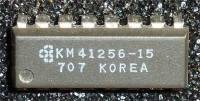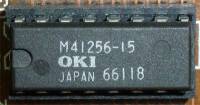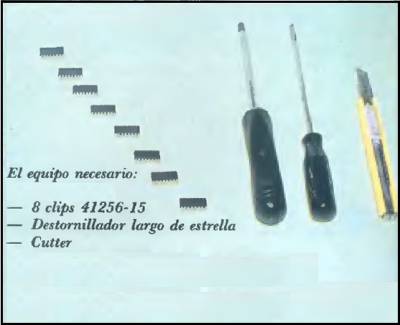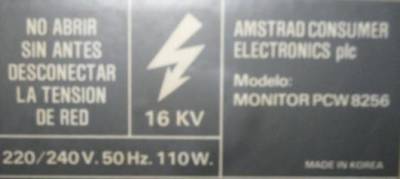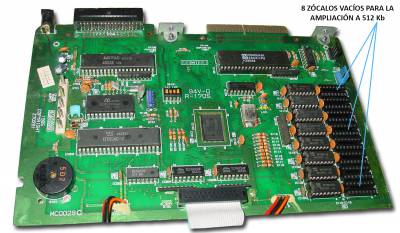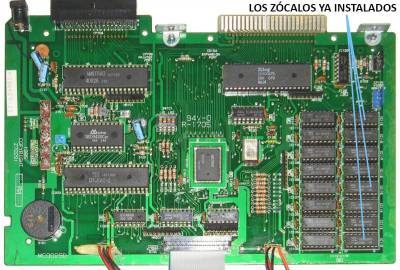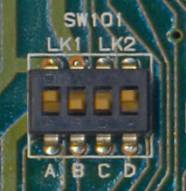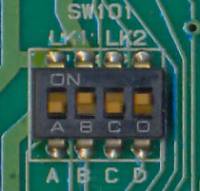Memory Expansion from 256Kb to 512Kb
As we get closer to a computer model, we find ourselves closer and closer to its limit. Messages such as “Out of memory” or “No bytes free”, lead to despair to any programmer eager to solve a complicated task, which must solve it with a thorough review of their work, looking for a method that leads to it result, saving as much memory as possible.
Fortunately for users of an Amstrad PCW 8256 professional computer, the problem is not of the slightest importance, it is ready, as it comes standard, to make a real “giant step”, considerably increasing its RAM memory. First of all, it should be clarified that, although the PCW doubles its RAM to half a megabyte, said memory will not modify the characteristics of the Basic programming language at all, which is supplied respectively with the computer, so that, if a program We fell short on the stock computer, the same thing will continue to happen after the transformation.
A good application that memory expansions have in these cases is to increase the capacity of the virtual disk or RAM disk. In the specific case of the PCW, the 256Kb extension is used to increase the capacity of your M: disk from 112 K to 368 Kb. In this way, copying files from one disk to another through the virtual disk is done in one go. once, using the command “PIP M:A:*.*”. Therefore, the main advantage of this RAM disk is that it can be used as a conventional disk drive, in which there are no mechanical delays due to the absence of the reading arm; on the other hand, the virtual disk is exposed to the destruction of all the files it contains at the moment the computer is disconnected.
The expansion that we discuss below for the PCW 8256 makes it virtually identical to the 8512 model. For this reason, and in order not to diversify the range of computers, Amstrad decided to stop manufacturing the PCW 8256. It would be expected that, with this intention, the price of the official kit that the house marketed dropped considerably, so many of the users who used this computer decided to expand it. Although memory expansion is extremely simple, even for anyone not very into electronics, it should be remembered that, at the time a screw was removed from the monitor casing, it lost its warranty. In this case, it was better to have it done by an Amstrad technical service, or wait for the warranty to expire.
If we decide to do the expansion ourselves, we will need 8 x 256 Kb RAM chips with the designation 41256-15. This subdenomination “-15” indicates that it can work at a maximum speed of 150 nanoseconds or, what is the same, the memories can communicate with the microprocessor at six million times in a second!
In the case of not finding them, you can decide to buy faster but also more expensive memories. Well, with the 8 integrated on the table, we will need some tools, such as a long star screwdriver.
The first step we must follow is to unplug the computer from the network and wait about five minutes for it to download. Next, we will support the monitor screen on a table (it is convenient to insert a towel to avoid damaging the screen) and with the screwdriver we will remove the six screws that fix the back cover.
Then we will lift said casing exposing all the circuitry and we will look at the plate that is closest to the disk drive. This is the main circuit of the computer and in it are the eight empty sockets that are impatiently waiting for the extra memory. To install the chips it will not be necessary to remove this plate from the central unit, and when placing them we must make sure that the small notch they incorporate is correctly located pointing towards the top of the computer; that is, in the same sense as the eight similar integrated ones that are next to the new ones. In most cases, the chips will not easily enter the sockets and for this we must help them by bending their pins inwards, but in no case should we force them to enter.
Once all 8 chips are placed on the board, let's not sing victory yet, because the PCW still can't recognize the new memory configuration. To do this, we must look at a small group of microswitches, which are located in the central part of the board, labeled A, B, C and D. As the PCW comes from the factory, the switches will be ON-OFF- OFF-ON respectively, but we will have to modify the state of switches A and B, keeping that of C and D to convert it into an 8512, that is, finally, we would have OFF-ON-OFF-ON. Any other settings should not be used, as some may damage the computer.
Now we will connect the computer to the network again and insert the operating system CP/M (side 2) in drive A:. Let's keep our fingers crossed for a moment until the introduction message appears on the screen. Take a good look at him. because the size of the disk M: will have changed to 368 Kb. If not, which is very strange, something will have been connected wrong, we will disconnect the computer from the network again and follow the aforementioned steps again, verifying that the eight chips make perfect contact.
- PCWWiki is not responsible for the damages suffered in the manipulation of any equipment, since this is an indicative guide and it is up to the users who manipulate them to assume the damages caused to the equipment.

